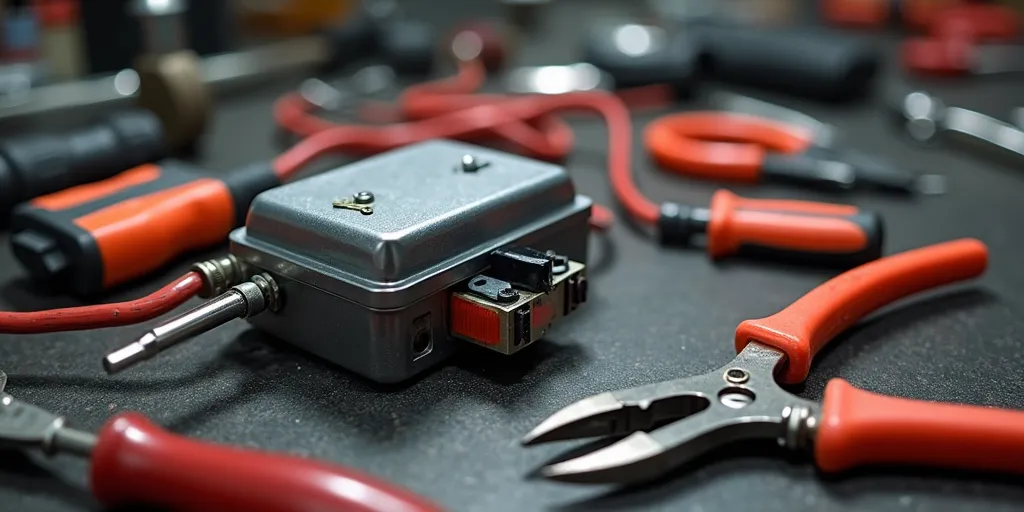-
Shopping Tools
-
Care & Maintenance
-
About
-
Dealer Login

On a golf cart, a voltage reducer turns high pack voltage into steady 12V for accessories, protecting radios, lights, and chargers while balancing load and preventing damage.
A golf cart voltage reducer is a DC-DC converter that steps the battery pack’s voltage (often 36V, 48V, or 72V) down to a clean, regulated 12V output. That 12V feed powers accessories that can’t handle pack voltage—stereos, LED lights, horns, GPS/USB chargers—without stressing a single battery in the series. The result is safer, cleaner power and a healthier pack across the life of your golf carts.
The reducer takes input from the full battery pack rather than tapping just one 12V battery. This ensures the entire pack shares the accessory load evenly.
Inside the reducer, high-frequency electronics “buck” the voltage down with efficient switching, filtering ripple so sensitive devices don’t buzz, flicker, or reset under load.
The unit holds a steady 12–13.8V (model dependent) across a rated current (e.g., 15A, 20A, 30A+). Quality units include over-current, short-circuit, and thermal protection.
The reducer often provides a dedicated 12V output bus you can fuse to multiple circuits—headlights, tail/marker lights, dash screens, radio, and charging ports—so each accessory is protected and isolated.
Pulling 12V from one battery in a series string unbalances the pack. The tapped battery cycles deeper and ages faster, causing uneven state-of-charge, reduced range, and early replacement. A reducer draws from the whole pack, equalizing accessory load and helping all batteries age together.
Lower voltage itself isn’t the secret to longevity; proper power management is. A reducer doesn’t “underpower” the cart’s propulsion system—it only feeds accessories the 12V they require. What extends overall system life is:
Bottom line: a quality reducer helps the battery pack age more evenly and preserves accessory health, which supports longer reliable service from the cart as a whole.
| Spec | What to Look For | Why It Matters |
|---|---|---|
| Input Range | Matches your pack (36/48/72V) with headroom | Prevents overvoltage faults during charge peaks |
| Output Current | Sum accessory loads + 25–50% margin | Stops brownouts; room for future add-ons |
| Efficiency | ≥ 90% typical | Less heat, longer runtime, smaller wiring losses |
| Protections | OCP, SCP, OTP, OVP | Limits damage during faults and shorts |
| Remote On/Off | Ignition or key-switch trigger lead | Prevents phantom drain when parked |
| Ingress & Cooling | Sealed housing, heatsink or fan | Reliability in dusty, wet, or hot environments |
Can one reducer power everything? Yes, if sized correctly. Many carts run all 12V accessories from a single 20–40A unit with individual fused circuits.
Do LEDs still need a reducer? Absolutely. Even though LEDs draw less current, they still require regulated 12V—not 36/48/72V pack voltage.
Will a reducer drain the pack when parked? Choose a model with remote enable or ultra-low quiescent draw, and tie it to the key switch.
A voltage reducer converts pack voltage to a clean, stable 12V supply for accessories, protecting electronics and spreading load evenly across the battery pack. By choosing a high-quality, properly sized unit and installing it with correct fusing, wiring, and ventilation, you’ll enjoy quieter electronics, brighter lights, and healthier batteries. Combined with well-maintained golf carts, a reducer is a small upgrade that delivers outsized gains in reliability, safety, and everyday usability.
